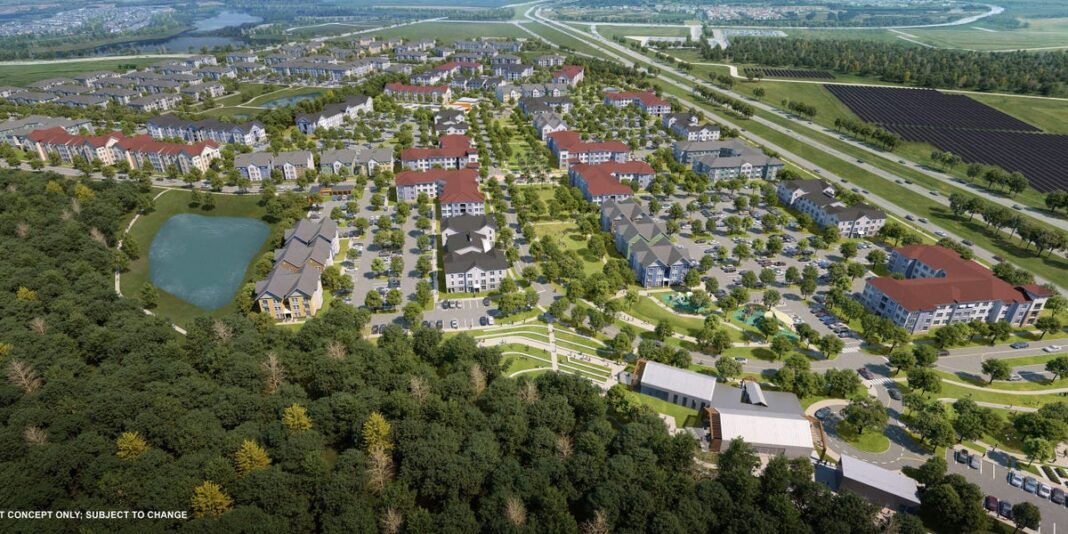## Mouse Ears and Empty Purses: A Look Inside Disney’s Affordable Housing Experiment
For decades, the magic of Disney has come with a hefty price tag, leaving many employees who keep the parks running struggling to afford a place to live. Now, the entertainment giant is making a bold move into the affordable housing market. But is this a genuine commitment to social responsibility, or just a PR stunt?

This week, we delve into the heart of Disney’s first affordable housing development, speaking to residents and experts to uncover the reality behind the headlines.
Join us as we explore the promises and pitfalls of this ambitious project, and ask whether Disney’s foray into affordable housing is truly a step towards a more equitable future.The Future of Affordable Housing in Orlando: Implications and Opportunities
Scaling Up Affordable Housing Development
The recent announcement of Disney’s affordable housing development in Orlando’s Horizon West community has sparked a much-needed conversation about the potential for replicating this model in other areas of the city. As the demand for affordable housing continues to outpace supply, it is imperative that developers, government officials, and community stakeholders work together to scale up affordable housing development.
One of the key benefits of Disney’s model is its emphasis on mixed-income housing. By incorporating a range of unit types and price points, the development aims to create a diverse and inclusive community that is accessible to residents of all income levels. This approach not only helps to address the city’s affordable housing shortage but also fosters a sense of community and social cohesion among residents.
According to a recent report by the Orange County Affordable Housing Task Force, the county is expected to experience a significant increase in population growth over the next several decades, with the population projected to reach 2.5 million by 2050. To meet this demand, developers and government officials will need to work together to increase the supply of affordable housing units.
There are several opportunities for government and private partnerships to drive affordable housing development in Orlando. For example, the city could offer incentives such as tax credits or density bonuses to developers who build affordable housing units. Additionally, the city could provide funding for community land trusts, which allow non-profit organizations to acquire and hold land for affordable housing development.
Another key consideration is the need for increased investment in affordable housing across the city. According to a report by the National Low Income Housing Coalition, the Orange County area has a severe shortage of affordable housing units, with only 35 affordable units available for every 100 extremely low-income households. To address this shortage, developers and government officials will need to prioritize affordable housing development and provide funding for programs that support it.
Addressing the Root Causes of Housing Insecurity
The Importance of Addressing Poverty and Social Inequality
Housing insecurity is often a symptom of deeper social and economic problems, including poverty and social inequality. To effectively address housing insecurity, it is essential to address the root causes of these issues. This includes providing access to education, job training, and economic development opportunities that enable low-income individuals and families to secure stable and affordable housing.
According to a report by the Urban Institute, individuals who experience housing insecurity are more likely to be living in poverty and have limited access to education and job opportunities. To address this issue, developers and government officials should prioritize programs that provide education and job training, such as vocational training programs and apprenticeships.
Another important consideration is the need for comprehensive solutions to address the root causes of housing insecurity. This includes providing access to healthcare, social services, and other forms of support that enable low-income individuals and families to secure stable and affordable housing.
One potential solution is the development of community-based housing initiatives that provide a range of services and supports to low-income residents. These initiatives could include on-site healthcare clinics, job training programs, and educational resources, as well as access to affordable housing units.
A New Chapter for Orlando: The Promise of Affordable Housing and Community Development
The Potential for Community Engagement and Participation
One of the key benefits of Disney’s affordable housing development in Horizon West is its emphasis on community engagement and participation. By incorporating community input and feedback into the development process, the project aims to create a community that is truly representative of the needs and values of its residents.
According to a recent report by the National Community Land Trust Network, community land trusts have been shown to be effective in promoting community engagement and participation in affordable housing development. These organizations allow non-profit organizations to acquire and hold land for affordable housing development, and often involve community members in the decision-making process.
Another important consideration is the need for infrastructure upgrades and service development to support the growing community. This includes providing access to public transportation, parks and recreational facilities, and other community amenities that enable residents to live healthy and fulfilling lives.
Practical Considerations and Next Steps
Community Engagement and Participation
One of the key considerations for developers and government officials is the importance of engaging with local residents and stakeholders in the development process. This includes providing opportunities for community input and feedback, as well as involving community members in the decision-making process.
According to a recent report by the Urban Institute, community engagement and participation are critical components of successful affordable housing development. By involving community members in the decision-making process, developers and government officials can ensure that affordable housing units meet the needs and values of their residents.
- Establish a community advisory committee to provide input and feedback on the development process.
- Host community meetings and public hearings to gather input and feedback from residents.
- Provide opportunities for community members to participate in the design and development of affordable housing units.
Infrastructure and Service Development
The Need for Infrastructure Upgrades and Service Development
One of the key considerations for developers and government officials is the need for infrastructure upgrades and service development to support the growing community. This includes providing access to public transportation, parks and recreational facilities, and other community amenities that enable residents to live healthy and fulfilling lives.
According to a recent report by the National Association of County Governments, infrastructure upgrades and service development are critical components of successful community development. By providing access to essential services and amenities, developers and government officials can ensure that affordable housing units meet the needs and values of their residents.
- Develop a comprehensive plan for infrastructure upgrades and service development.
- Provide funding for infrastructure upgrades and service development.
- Collaborate with community stakeholders to identify priorities for infrastructure upgrades and service development.
Monitoring Progress and Evaluating Success
The Importance of Monitoring Progress and Evaluating Success
One of the key considerations for developers and government officials is the importance of monitoring progress and evaluating success. This includes collecting data on the effectiveness of affordable housing development, as well as evaluating the impact of these initiatives on residents and the broader community.
According to a recent report by the Urban Institute, monitoring progress and evaluating success are critical components of successful affordable housing development. By collecting data and evaluating the effectiveness of these initiatives, developers and government officials can ensure that affordable housing units meet the needs and values of their residents.
- Establish a system for collecting data on the effectiveness of affordable housing development.
- Evaluate the impact of affordable housing development on residents and the broader community.
- Use data and evaluation results to inform future development and policy decisions.
Conclusion
Disney’s foray into affordable housing is a story with both promise and cautionary whispers. While the Lake Nona development offers a glimpse into a potential future where corporations address housing needs, it’s crucial to acknowledge its limitations. The project, while ambitious, only addresses a sliver of the affordable housing crisis. The reliance on private sector solutions raises questions about sustainability and equitable access, particularly for those beyond Disney’s sphere of influence. This isn’t simply about bricks and mortar; it’s about power dynamics and the responsibility of corporations in shaping communities. Disney’s initiative could, if replicated and expanded, signal a shift in corporate responsibility, pushing other companies to contribute to solving the housing crisis. However, we must remain vigilant, ensuring that such projects prioritize community needs and don’t become gilded cages, trapping residents in a system that perpetuates inequality. The future of affordable housing hinges on a collective effort, one that transcends corporate philanthropy and embraces systemic change. Disney’s experiment is a starting point, a spark that could ignite a larger movement, or it could simply fade into the manufactured magic of a theme park. The choice, ultimately, lies with us.

